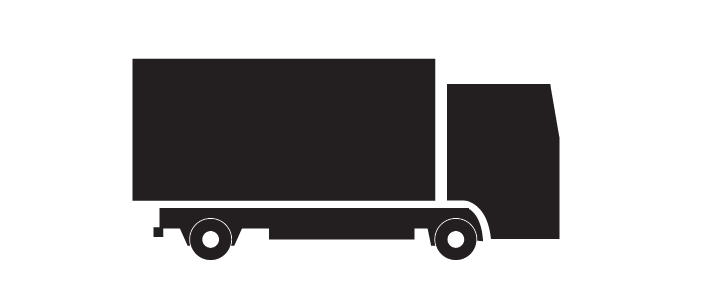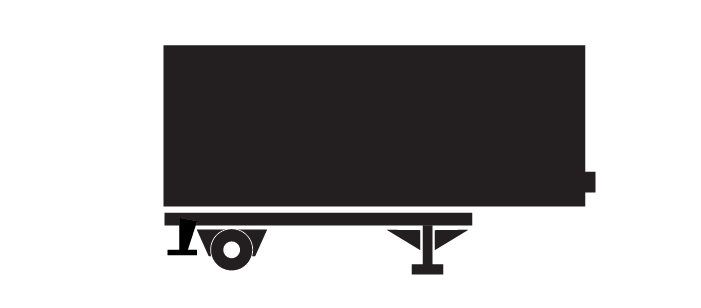How can we help you?
Client
Login
Shipment
Status

There are several different trailer types used for hauling freight of all kinds, from produce to giant cranes. It is crucial for shippers to understand the weight and dimensions of their shipment to ensure they are loading a trailer correctly and adhering to the local weight and length restrictions. Likewise, the client must also understand the type of equipment needed to haul their shipments in order to source the correct carrier. In this blog we will explore some of the basic factors that a shipper must take into consideration when sourcing carries for their loads.
The first question every shipper must ask themselves is how big and heavy is the product they are trying to ship.
Are you shipping a commodity that has a weight that will be evenly distributed over the deck of the trailer, or is it heavier on one side than the other? Is it too tall or too wide to fit in a van or china top trailer?
Each trailer type is manufactured for different use cases (more on that below!), therefore there is an option for you no matter the size. However, the reason this is so important is to ensure that the commodity you are loading on the trailer is loaded in accordance with:
Each axle on a trailer has a maximum capacity of weight that can be safely loaded over it, without stressing the equipment. Additionally, each axle grouping (two or more axles closely positioned together) has a maximum weight capacity. Let’s take a look at the example below for further explanation.
In the below image, there is a step deck trailer and a large, heavy crate. If that crate is loaded toward the back of the trailer, the majority of the weight of it will fall over the tri-axle grouping, and therefore less weight will be on the axles of the tractor unit.
The closer we move the crate to the middle of the trailer deck, the less weight will be on the tri-axle grouping, while more weight will be added to the tractor’s axles.


Some trailers come equipped with axle weight gauges that indicate how much weight is on that axle. Carriers will use this to determine if the load needs to be shifted forwards or backwards.
Pro tip: If the axle weight gauge is indicating a presumed inaccurate reading, be sure to pull the trailer forward a few inches to reset the gadge.
In the absence of a trailer axle gauge, carriers can use on-site shipper’s scales or private or government provided highway scales.
Shippers should have a basic understanding of state and provincial weight restrictions of their most frequented lanes, so that they understand the weight restrictions they must comply with. This will make the loading process that much easier for both you and the carrier, and avoid having to readjust when the axle gauges or scales show overweight.
Each jurisdiction has a set of weight and length restrictions in place that must be adhered to. Failing to do so will result in a sidelined carrier and the need to off-load or re-distribute weight (this is not time-effective nor cheap as a mobile crane is typically involved).
These jurisdictions regulate the overall maximum weight of the truck and trailer unit as well as the individual axles (or axle groupings), over the length of the trailer.
Pro tip: Just because the overall weight of the tractor trailer unit is within the regulated weight, doesn't mean the axle weights are. Be sure to check each axle to ensure that they meet the weight restrictions of each province or state through which your carrier will be traveling.
For some regions, seasonal restrictions may be in place, commonly referred to as “frost laws” or “thaw laws.” There are hefty fines to pay for carriers when transporting shipments that do not adhere to the length and weight restrictions within that region.
These restrictions are in place to protect the highways and roads of these jurisdictions as they are most vulnerable to deterioration when the ground temperature is fluctuating.
A dry van is the most widely used trailer on the market, and typically used for palletized, crated or boxed items to provide protection against elements of weather and roads.

A straight truck is used for smaller shipments, often referred to as “hotshot.” All axles, cargo and cab are part of the same chassis.

The refrigerated reefer trailer is equipped with a diesel-powered refrigeration unit used to haul perishable items such as food, produce, plants, protein, health products and anything else that requires temperature control.

A pup trailer is the shorter, single axle version of a dry van which can be used for shipments with truck size restrictions.

A flatbed trailer is used for freight that won’t fit in a standard sized trailer and does not need to be transported in an enclosed area.

A step deck trailer is a version of the flatbed trailer design that mainly consists of a bottom and top deck. These trailers are specifically designed to haul freight that cannot be transported on a standard type of flatbed, typically due to height restrictions.

A stretch double-drop trailer is generally used for carrying oversized shipments. Its lower deck allows you to load products that can be as tall as 10 feet. It also comes with a so-called “well,” a longer piece at the trailer’s back deck and middle portion. The well usually measures from 25 to 29 feet.

The b-train trailer consists of two trailers linked together by a fifth wheel. There are many versions of the b-train with different axle amounts. They are most commonly used in Canada, with Manitoba and Saskatchewan having more heavily restricted weight restrictions, and are only allowed on major routes within those provinces. They are allowed on secondary highways with more weight restrictions.

